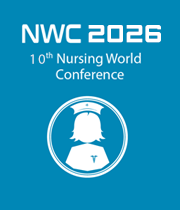Biomedical Imaging
Biomedical imaging is the visual symphony that unfolds the mysteries of life at various scales, offering clinicians and researchers a visual passport into the intricate landscapes of the human body. This multifaceted field employs an array of techniques, from magnetic resonance imaging (MRI) capturing detailed anatomical structures to positron emission tomography (PET) unveiling physiological processes at a molecular level. Biomedical imaging is the silent hero in diagnostics, enabling non-invasive exploration of internal landscapes and unraveling the mysteries of diseases. It extends its tendrils into research, fostering breakthroughs in neuroscience, oncology, and beyond. With the integration of artificial intelligence, the analysis and interpretation of imaging data reach new heights of efficiency and accuracy, propelling us into an era of refined diagnostics and targeted treatments. Key terms resonating within biomedical imaging include radiology, medical imaging, imaging modalities, diagnostic imaging, and imaging technology.
The field involves sophisticated image analysis and processing techniques, often leveraging computer algorithms and artificial intelligence. Ongoing technological advancements, including higher field strength MRI scanners and advanced contrast agents, continually enhance imaging capabilities. Biomedical imaging finds applications across medical specialties, guiding interventions and playing a crucial role in clinical diagnosis and treatment. Its integration with other disciplines contributes to improved diagnostic accuracy and patient care.



Title : The power of presence: Investing in LVNs for lasting impact
Emma Gitomer, Houston Methodist Hospital, United States
Title : Reaching our residents: An interdisciplinary approach to educating our future providers in the art of telephone triage
Cori Brown, Childrens Hospital of Philadelphia, United States
Title : Turn the heat around: Quality improvement in malignant hyperthermia response through in-situ simulation
Ayumi S Fielden, Houston Methodist Hospital, United States
Title : PTSD and tools for nursing resilience
Renee Bauer, Indiana State University, United States
Title : Birth partnerships: Enhancing nursing care with doula support
Vera Kevic, Doulas on Bikes, Canada
Title : Shift strong: A proactive stress-physiology framework for early identification of nurse distress
Laura Hall, Colorado Mesa University, United States